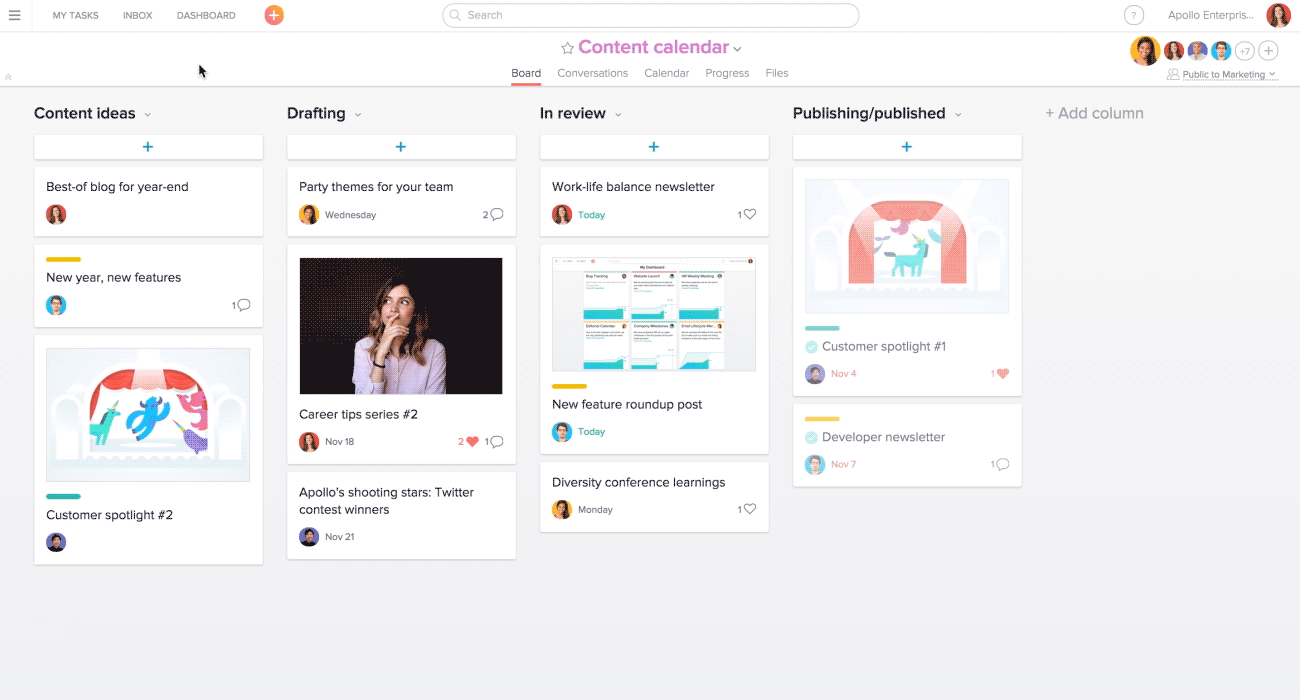Asana, the fast-growing work-tracking tool created by a co-founder of Facebook, today declared war on Trello, its biggest rival. Asana, which has to date been known for its collaborative to-do lists, today introduced boards — essentially a note-for-note re-creation of Trello’s rival approach to getting things done. The move could accelerate the growth of a once-arcane sector of the software world into a default tool used across a broad range of industries.
Until now, the divide between lists and boards has essentially been religious. Some believe the most efficient way to work is to create lists of tasks and assign them; others believe it’s more efficient to visualize those tasks on cards and arrange the cards on a digital whiteboard. People particularly like boards for tracking the state of objects — moving a job candidate through the recruiting pipeline, say, or moving an article from conception to publication.
This summer Asana introduced what it calls “custom fields,” which among other things let users track the state of various projects by adding in their own dropdown menus and text boxes. I’ve found them tremendously useful myself — but still, everywhere that Asana goes, people are always asking it to build boards. Specifically, to build Trello boards. And they refused to switch from Trello to Asana unless Asana had boards.
So, Asana built boards. “We want to give Trello full credit here,” said Justin Rosenstein, an Asana co-founder, in an interview. “They’ve done a great job popularizing this easy visual view. But we see a much bigger opportunity here to enable more kinds of work.” In Asana’s opinion, a board is just one way to view your work — and until it’s connected to a more robust system for tracking work, it’s not half as powerful as it should be.

In the first version of boards, you have to build them by hand. It’s easy — you create labels for some columns, add “cards” by typing in their names, and move them around however you like using drag and drop. What’s more interesting is what’s coming next. Within months, Rosenstein says, “boards” will simply become one view inside Asana. If you like using lists to get your work done, you can stick with lists. If you prefer boards, you can tap “boards” and visualize your list of projects that way. Different colleagues can work according to their own preferences. And different projects can take the shape that best suits them.